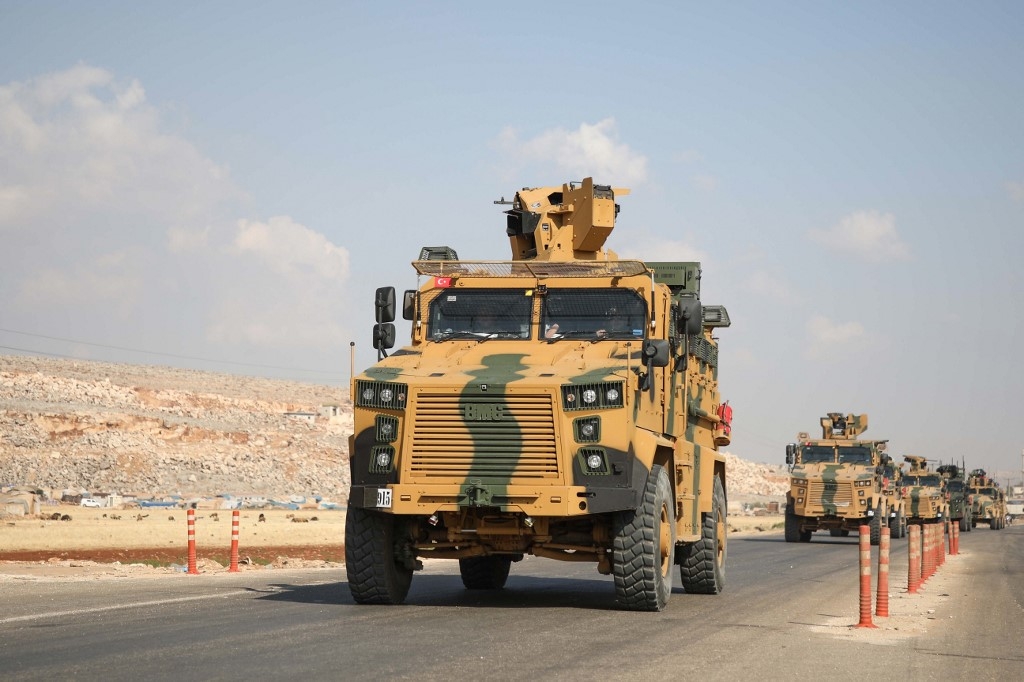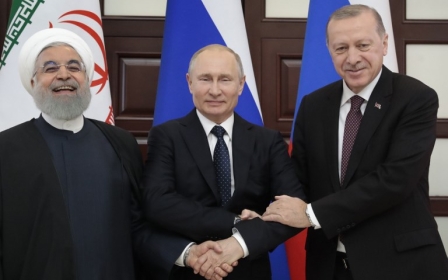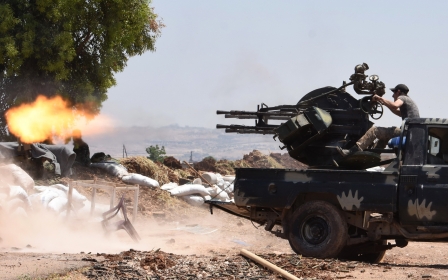What are Turkey’s options in Syria?

Turkey had three possible courses of action in response to the civil war in Syria: diplomatic engagement, isolation or military intervention.
The idea at the outset was to bring Syrian President Bashar al-Assad to the negotiating table with the opposition, and to persuade them to find common ground, focusing on rights and freedoms and swift elections. Former foreign minister Ahmet Davutoglu met Assad in 2011, but Turkey’s perceived leverage was not enough to persuade the Syrian establishment to soften its stance against the peaceful uprisings.
The result was a complete collapse of bilateral relations, as Turkey sided with the opposition. Yet, in the early days, there was no indication that Turkey’s involvement would evolve into a military intervention, through both proxies and direct engagement, as occured from 2016.
Kurdish forces
There are three main reasons why Turkey followed the trajectory of projecting hard power in Syria. First was the massive flow of nearly four million refugees to Turkey. Second was the influence of Kurdish forces, who had made moves to establish autonomous zones in the border area while establishing close relations with the US. Third was the emergence of Russian and Iranian zones of influence in Syria.
New MEE newsletter: Jerusalem Dispatch
Sign up to get the latest insights and analysis on Israel-Palestine, alongside Turkey Unpacked and other MEE newsletters
Turkey is in Syria to contain the PYD, the Syrian branch of Turkey’s outlawed Kurdistan Workers’ Party (PKK); to eliminate the last remnants of the Islamic State (IS); and to stabilise the situation across the border. Turkey has pursued these goals in coordination with Russia, but at the risk of colliding with Syrian forces. Recent clashes between Turkish proxies and Syrian forces in Idlib show that coordination on the ground in Syria is next to impossible.
Erdogan needs a respectable exit from Syria after all the investments his country has made in Syrian refugees and stability in northern Syria
Turkey and the US have held talks on establishing a safe zone in northern Syria, but there has been no real progress so far. The Kurdish question has been a major driver of Turkey’s foreign policy, but it is now time for Ankara to think of a road map for extricating itself from the conflict and/or minimising its impact.
The first option is to make a deal with Assad. Until the Arab Spring, Turkey and Syria had established a high-level, strategic cooperation council that met twice a year, under the leadership of heads of state and with the participation of ministers and bureaucrats. The aim was to achieve the highest possible political and economic cooperation. This was significant, as the two countries had been on the brink of war in 1998 over Syria’s sheltering of PKK leader Abdullah Ocalan.
A hard sell
The main obstacle to cutting a deal would be Turkish President Recep Tayyip Erdogan’s strong and consistent opposition to Assad. The strong secular/nationalist segment in Turkish society would support such a deal, and Erdogan’s strategic partnership with Russia would also justify such a rapprochement, with the logic that it would make for the strongest coalition in Syria and better serve Turkey’s interests of containing the PYD.
Still, it would be a hard sell, as Erdogan’s support base has widespread anti-Assad feelings, and such a deal would be viewed as a U-turn in Turkey’s foreign policy towards Syria.
The second option would be to make a deal with the Kurds in Syria, alongside a peace process with Turkey’s Kurds, similar to the one that ended abruptly in 2015. This would be a breakthrough, both in terms of domestic politics and Syria policy, removing the constraints of further militarisation. The main challenges to this route would be Erdogan’s nationalist-conservative political coalition, the anti-Erdogan stance of Kurdish politics, and the PYD’s autonomy agenda in Syria.
Finally, the third option would be to narrow the focus, with plans for safe zones and tactical moves to contain the PYD in northern Syria. This would involve tightening the borders to stem the further flow of refugees to Turkey, and preserving the strategic partnership with Russia in Syria. Iran would be on board due to Tehran’s irritation with PKK-linked groups in the region.
This strategy could work if the US would agree on a plan for a safe zone that would keep the PYD away from Turkish territories and provide safety to the Kurds and others in Syria. The challenge would be the half-hearted US commitment, Turkey’s engagement with opposition forces, and the military advances thus far.
Complex dynamics
Turkey faces serious challenges in Syria, and its current policy is on track to result in an overreach and unbearable costs in the near future.
Turkey has found itself alone in Idlib, facing a catastrophic humanitarian situation in this rebel-held province. The high number of Syrian refugees is a pressing issue in Turkey, and one of the reasons for ruling party’s declining support in municipal elections last month.
But Turkey is not out of options. Erdogan needs a respectable exit from Syria after all the investment his country has made in Syrian refugees and stability in northern Syria - even if he has to do it alone, under the imperatives of a catastrophic situation and the complex dynamics of regional and international politics.
The views expressed in this article belong to the author and do not necessarily reflect the editorial policy of Middle East Eye.
Middle East Eye delivers independent and unrivalled coverage and analysis of the Middle East, North Africa and beyond. To learn more about republishing this content and the associated fees, please fill out this form. More about MEE can be found here.







